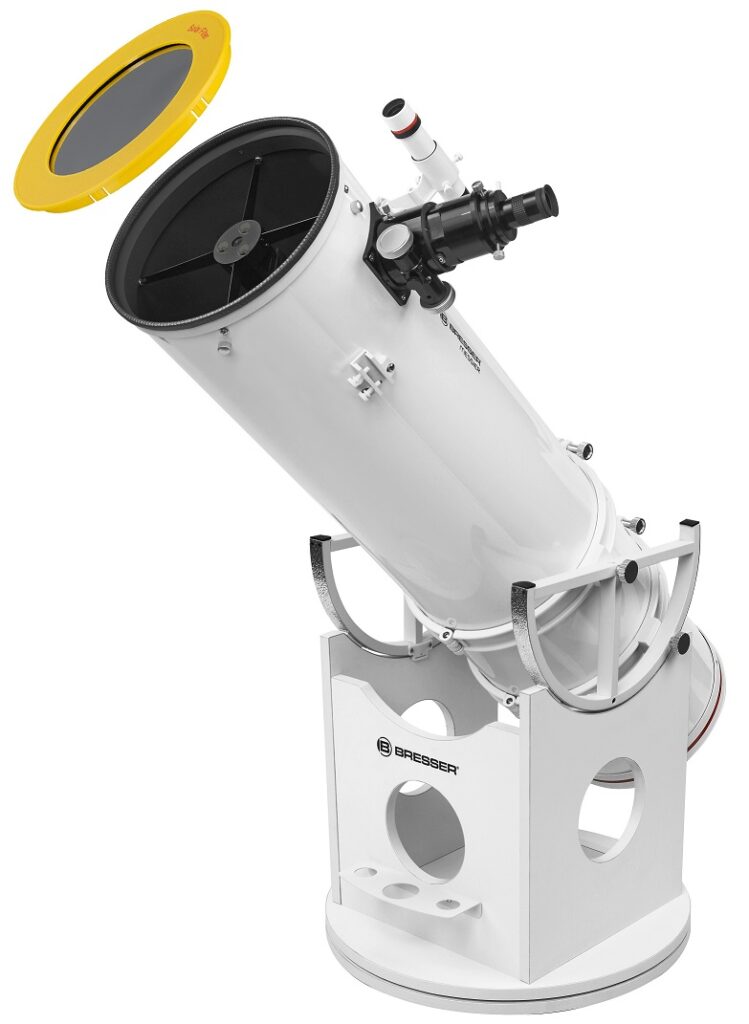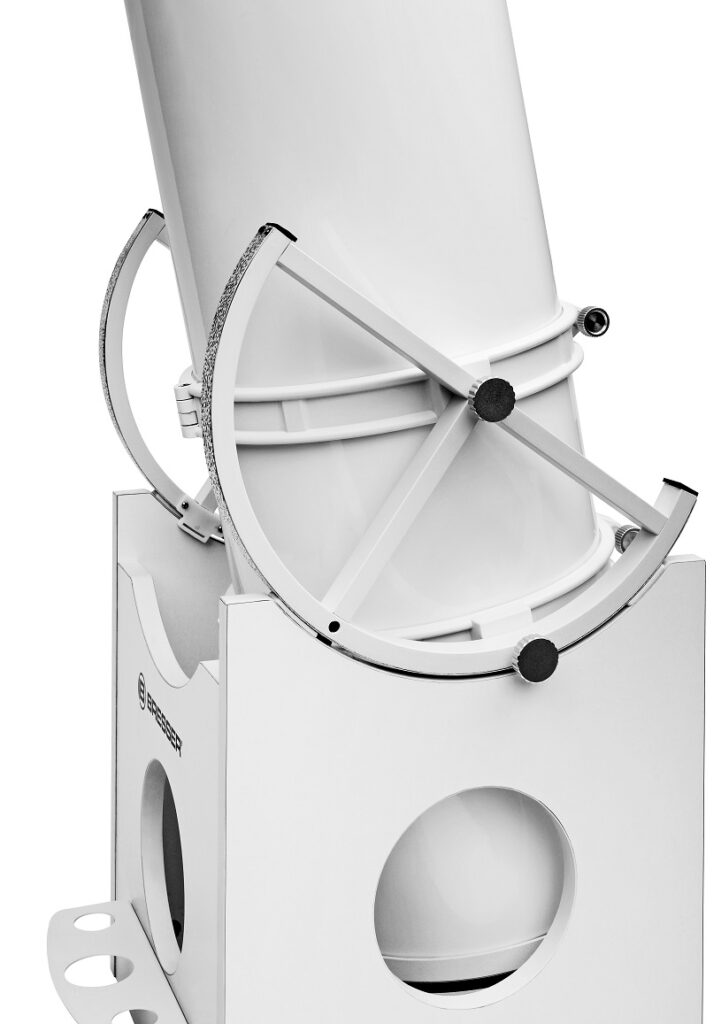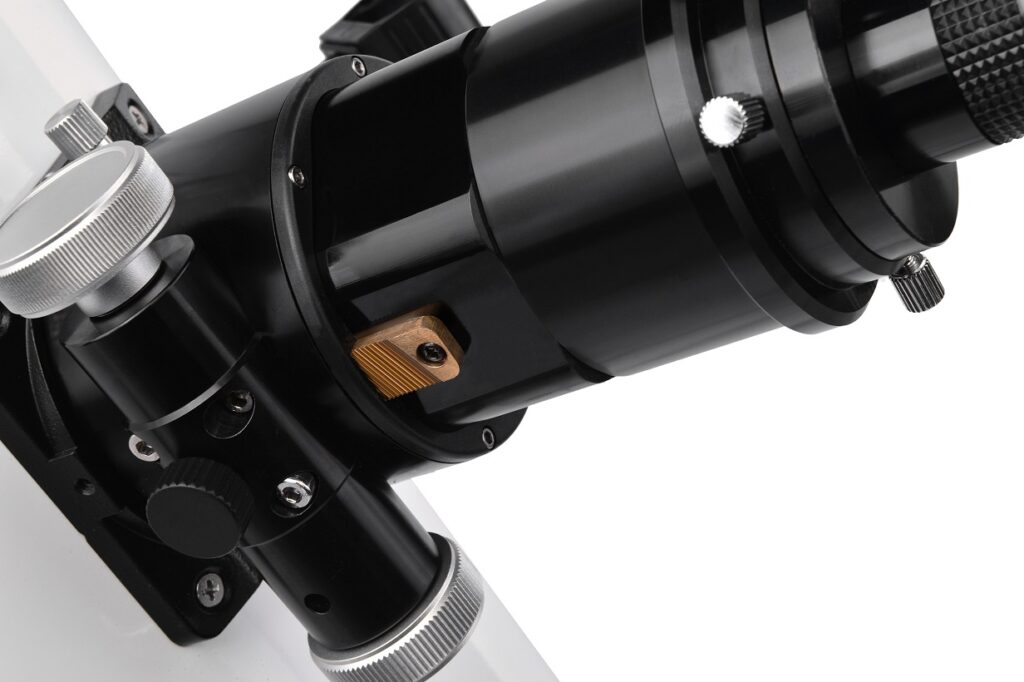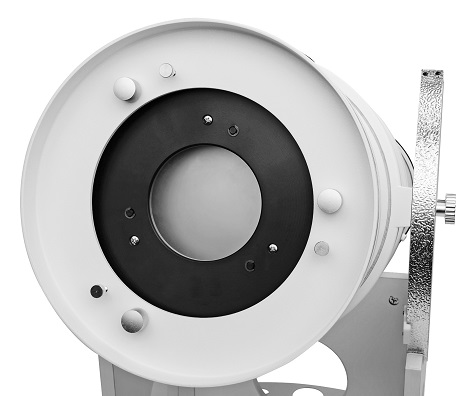Bresser’s Messier-series Dobsonian telescopes stand out from the crowd due to their features, which cannot be found on other brands of comparable telescopes:
- The telescope tube is held in place using tube clamps. This means the tube can be rotated along its axis to find the perfect eyepiece position. It can be optimally balanced by adjusting the tube within the tube clamps. You can also fully demount the tube and use it with an equatorial mount, for example.
- The altitude bearings have a comparatively large radius. This facilitates finer adjustments along the vertical axis. Many Dobsonian telescopes in this price range do not have proper altitude bearings!
- The so-called rockerbox, upon which the telescope is placed and which enables rotation in azimuth, is fitted with quick-release fasteners on the Messier Dobsonians, the kind you are familiar with from furniture. This enables the box to be quickly and simply assembled. In this way, the box can be disassembled again and again.
- The Hexafoc focuser is superior to focusers on comparable telescopes by other manufacturers.
- A compatible solar filter is supplied with the product. As the tube is closed, no sunlight can enter the telescope from the side. This makes it possible to safely view the Sun.
In addition to these features, you also receive a Messier Dobsonian with high-quality optics and a parabolic mirror which is fully adjustable. This makes it possible to start a lasting relationship with the night sky. The Messier Dobsonians are available in two sizes. You can find both models here in our shop.
Note: These telescopes are named after Charles Messier (1730-1817), whose “Catalogue of Nebular Objects” contains a number of celestial objects which you can observe using these telescopes. A modern guide to Charles Messier’s objects can be found in Cambridge University Press’ book The Messier Objects.




